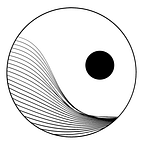What Are Decentralized Autonomous Organizations (DAOs)?
A look into functioning of DAOs, and their advantages and disadvantages
Cryptos and other digital assets have a huge advantage over others — that is, they are decentralized. No single institution such as a government or central bank controls them. They are split across several nodes and computers.
Similar to the decentralized nature of these assets, DAOs are decentralized organizations where control is spread out amongst participants. There is no hierarchy. There are no company headquarters — and they are governed by crypto holders. The rules that govern the DAO are enforced by smart contracts on a blockchain.
Earliest example of a DAO
The earliest example of a DAO is “The DAO” — which was built on Ethereum and had an open source code base. It had raised 12.7 million ETH (worth around $150M at the time)
It was designed to function as a venture platform for crypto projects. Once a project was pitched, DAO token holders could vote on projects which would receive funding. However — the project never actually made it live, due to a hack which eventually led to a split of the original Ethereum into Ethereum Classic and Ethereum.
However DAO development did indeed continue quietly, key lessons were learnt from The Dao episode by other projects such as Aragon and DaoStack. These projects now run DAOs for some of the largest DeFi platforms.
How do DAOs Work ?
A DAO can be adapted and programmed according to a community’s goals.
- 📖 Establishing the rules — The DAO rules are set in place through smart contracts by the core community members. This establishes the base framework from which the DAO will operate
- 💵 Funding — Once rules are established, the DAO needs to figure out how to raise funding and how to bestow governance. This is usually done through a token sale of governance tokens. The proceeds are used to fill the DAO treasury.
- 🗳 Voting rights — Token holders receive voting rights, typically in proportion to their holdings. After funding, the DAO is ready for deployment.
- 💻 Deploying into production — Once the DAO code is pushed into production, it is no longer possible for any one entity to modify the code. Any change has to be arrived at through consensus, through voting by token holders.
What are some advantages and disadvantages of DAOs?
✅ DAOs have lower barrier to entry than traditional companies — people from across the world can contribute
✅ They are inherently more transparent — anybody can view major actions such as voting, funding, etc.
✅ There are tools available, which can be put together to construct a DAO with very little cost
❌ They are slower moving as compared to traditional companies due to the flat structure involved. Decisions may take much longer time to make.
❌ In certain cases, not much of a change can be seen as compared to governance in traditional companies, if some of the voters hold disproportionally large numbers of tokens
❌ Being a very new space, there are a lot of legal question marks around certain tokens, which may be seen as securities under current laws
So will DAOs kickstart a shift in fundraising and operations for companies? Let’s wait and watch — DAOs may very well replace traditional companies in the years ahead. Only time will tell !
